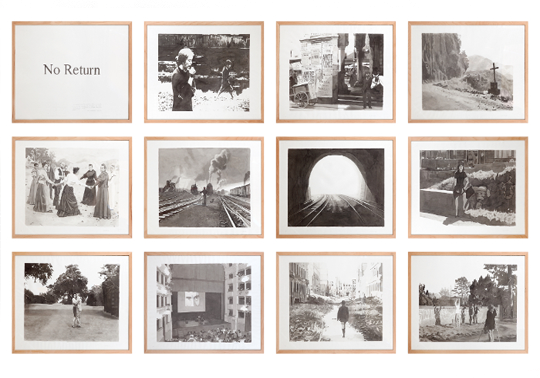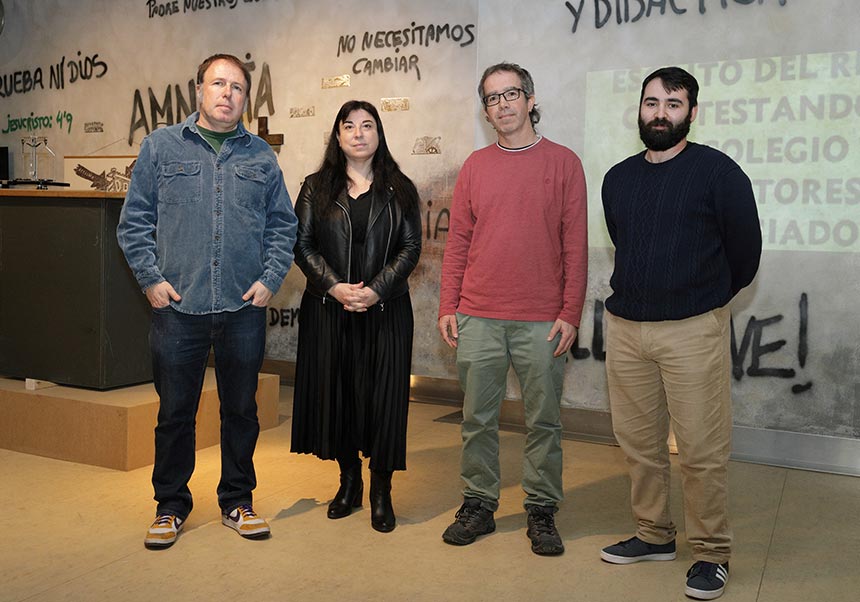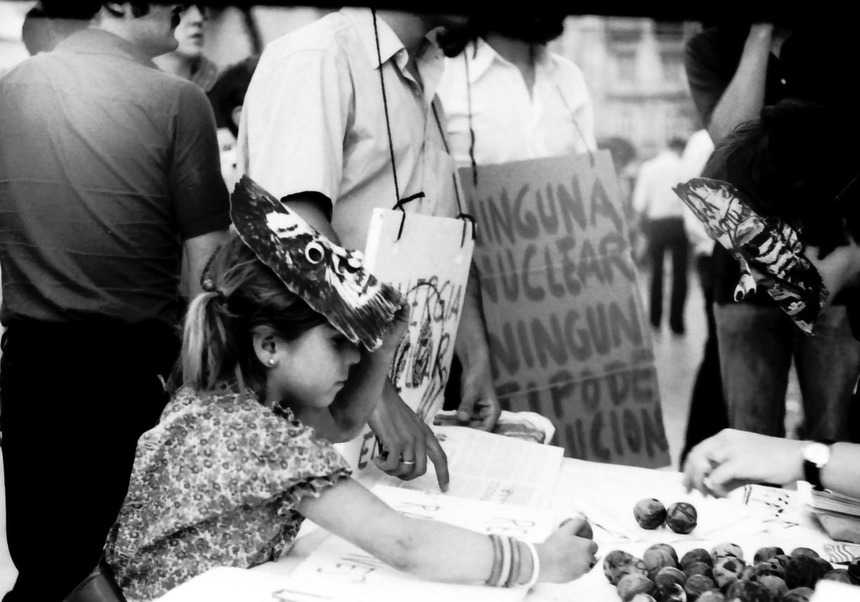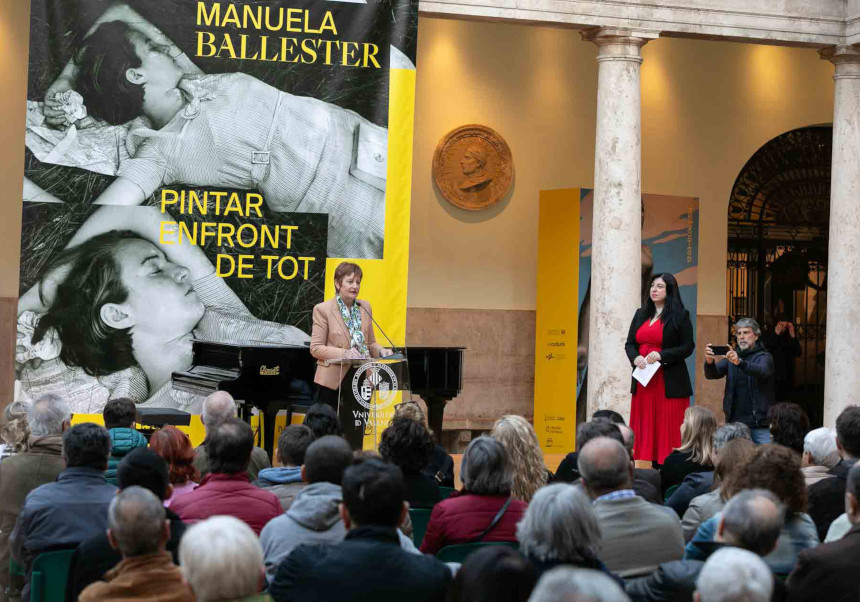Xisco Mensua evokes the irreversibility of the time and the death in an exhibition at La Nau
- May 29th, 2017

The Universitat de València has presented in the Cultural Centre La Nau the exhibition of Xisco Mensua ‘No return’, in which the painter reflects on the irreversibility of time and death. Apart from Xisco Mensua, who is also coordinator of the exhibition, in the presentation, the vice-principal for Culture and Equality, Antonio Ariño and the director of activities of the collection Martínez Guerricabeitia, José Pedro Martínez, have taken part. The exhibition can be visited until 17 September.
The exhibition is based on the work with the same title, ‘No return’, with which the painter won five years ago the 11st edition of the Biennal Martínez Guerricabeitia. The work, that is a part of the collection of the Universitat de València, is a polyptych compound by 12 drawings.
Once the hall was observed which is formed by three spaces, one of them being almost double, the painter imagined a piece guiding each one of them. The first space is headed by the polyptych ‘November’, which is autobiographical and revolves around a home and the daily life, what is domestic. As he explains, in order to evoke absence, he looked for works to accompany it: representations of a clock, a bed, a decorative object, collages based on a familiar event, a date.
The second space is headed by the mentioned No Return and talks about death and time through references and quotes to our culture. In fact, Mensua adds, ’the polyptych No Return is formed from copies of frames of a cinema that will never be back’. There were other works: in one of them, Glenn Gould can be seen playing the piano in a record room; in others, what could be an illustration of a brief poem by Ezra Pound, a quick mention to Ad Reinhardt, a cover of a beautiful, impossible book by Jankélévitch, an old cover of Requiem by Mozart, Ophelia.
Lastly, the third space is marked by the polyptych Collioure-Portbou, that, regarding the author’s explanation, ‘sets out symmetry of the deaths of Antonio Machado and Walter Benjamin and opens a new chapter that could be called Geography and History, in which also the word exile is found, the commemorative tombstone of Walter Benjamin in the Portbou cemetery, the beginning of Mnemosyne by Hölderlin, a table with materials used for the production of the pieces of the exhibition, a notes and reflections written as a journal, a landscape’.
The vice-principal for Culture and Equality, Antonio Ariño, has highlighted that the double theme of the exhibition, the non-return of time and death, is, in fact, an only theme that is not a strictly cultural issue but how each culture approaches this topic.
For its part, José Pedro Martínez has highlighted that the exhibition of Xisco Mensua is part of one of the work lines with which the university was engaged, the management and care of the artistic collection that the family Martínez Guerricabeitia donated to the institution. The exhibition is a part of the called ‘Encuentros con la colección’, a synopsis under which, the office for the vice-principal for Culture produces exhibitions of artists linked to the collection. With the purpose of making easy the closeness to the exhibition, the Universitat de València offers a free service of guided tours.
















